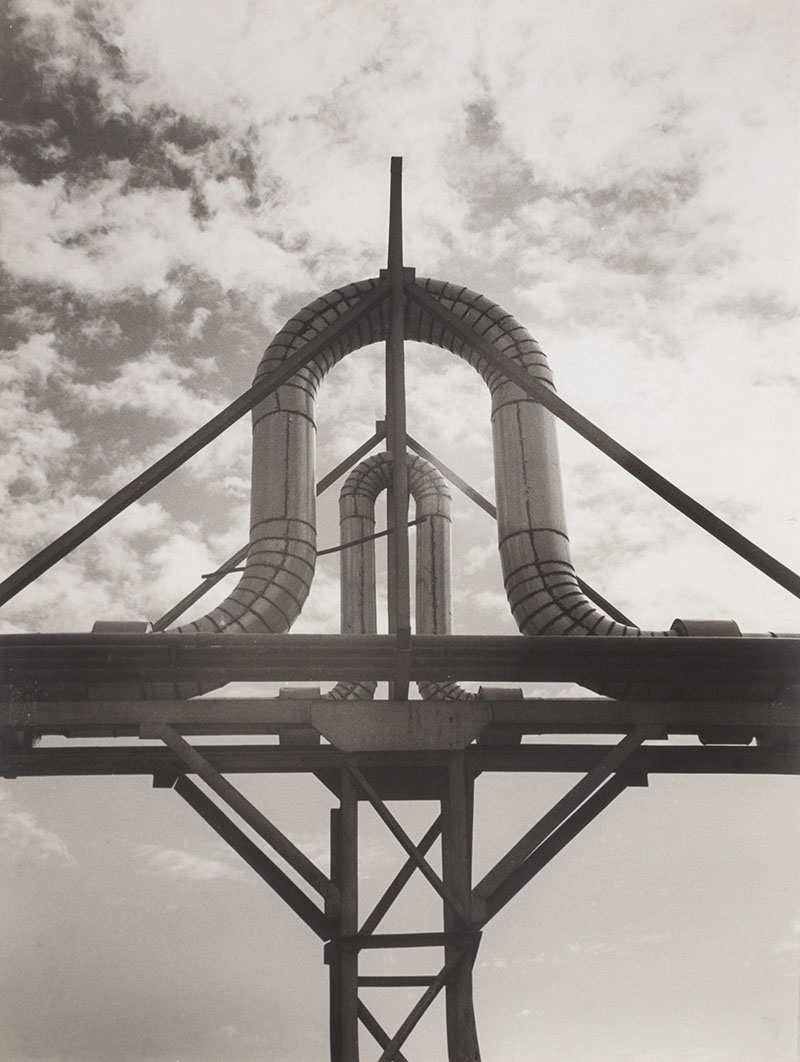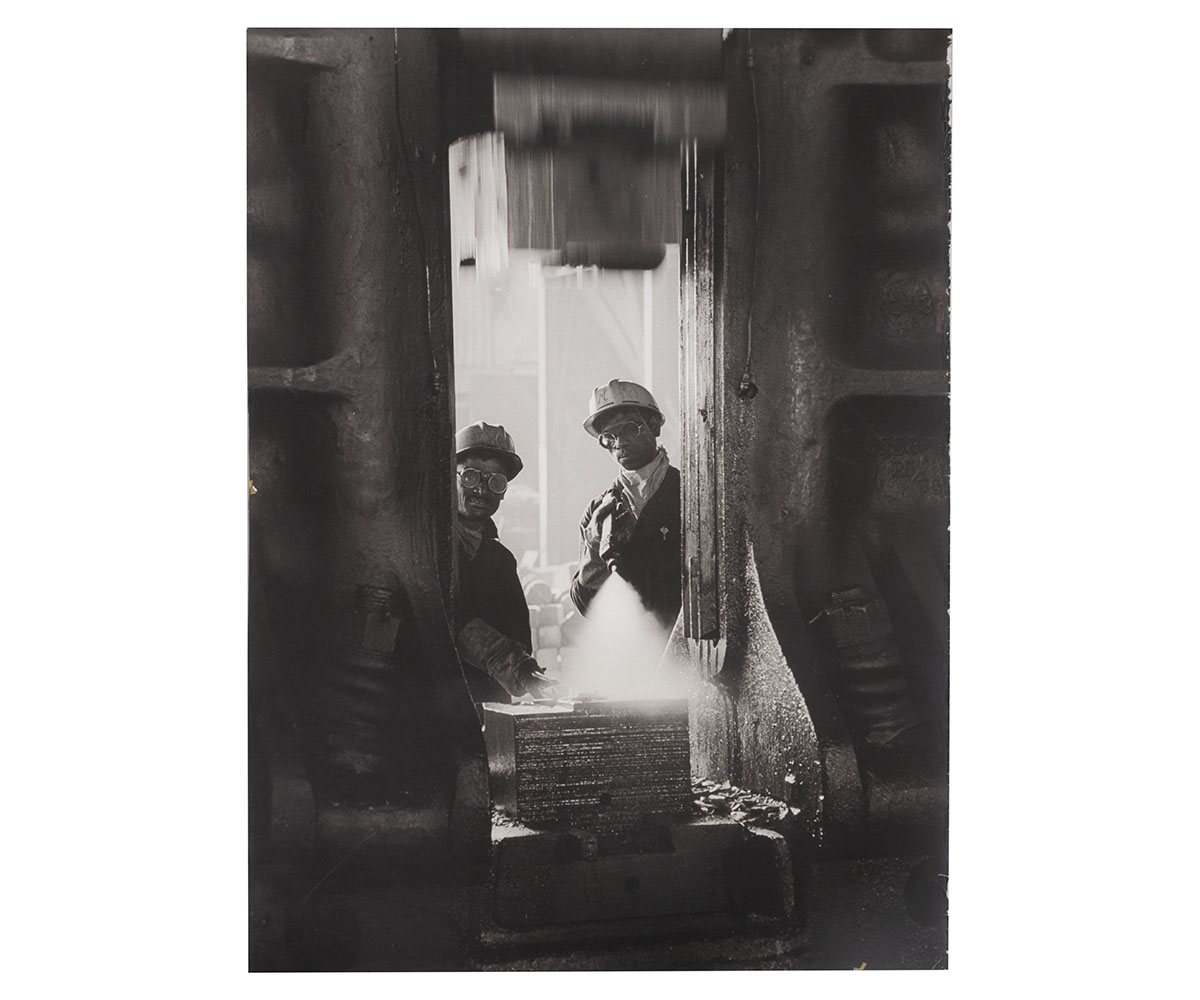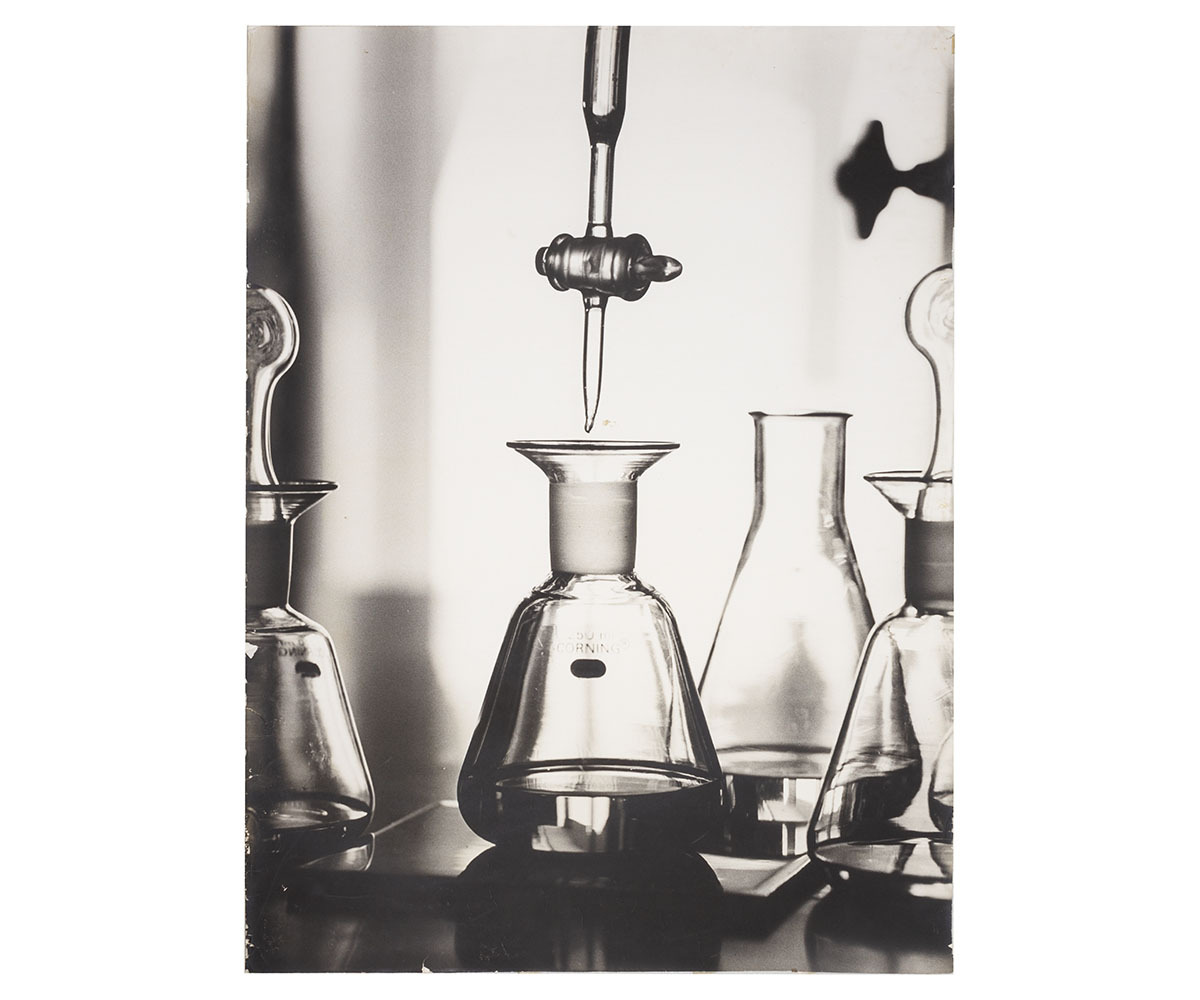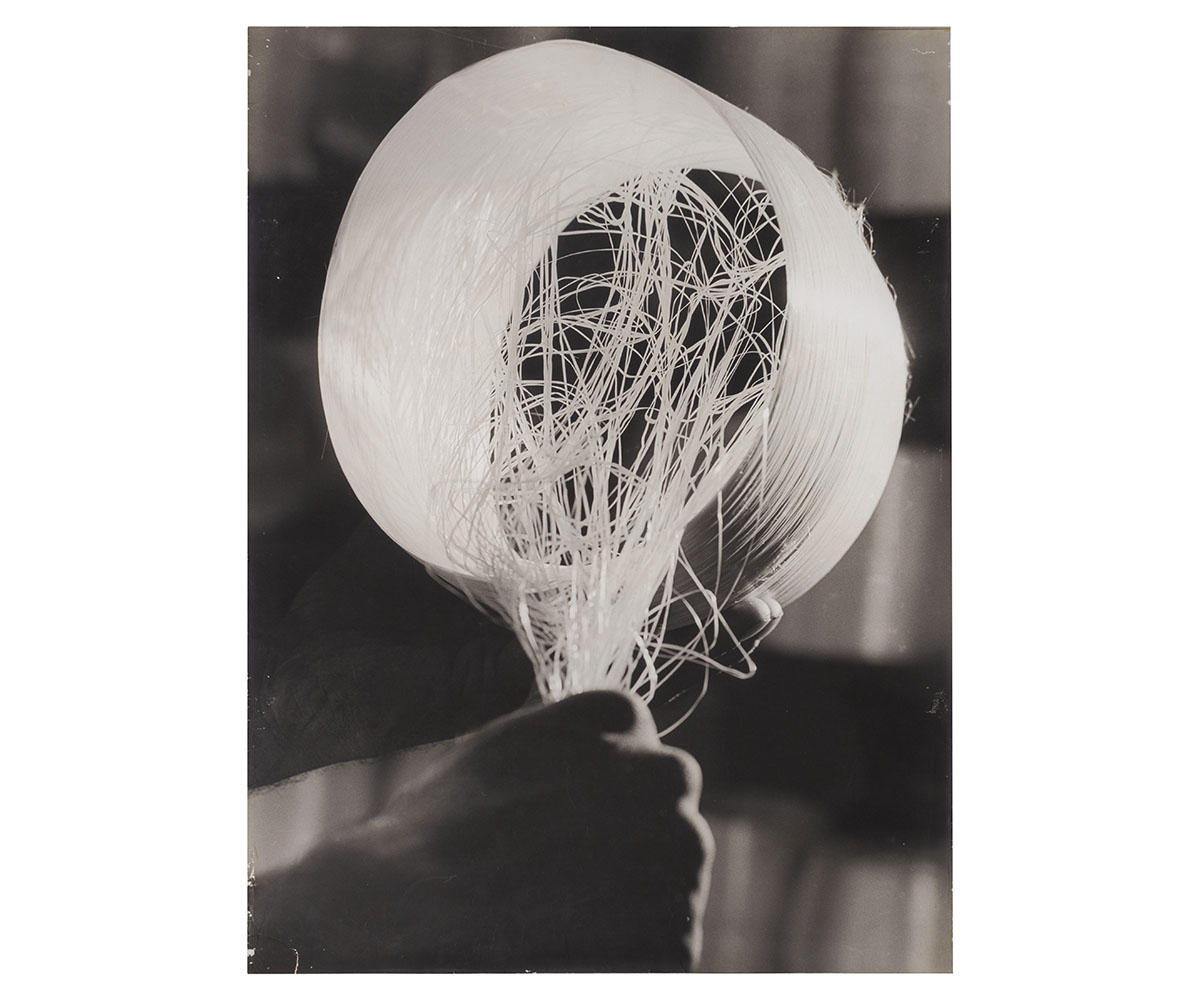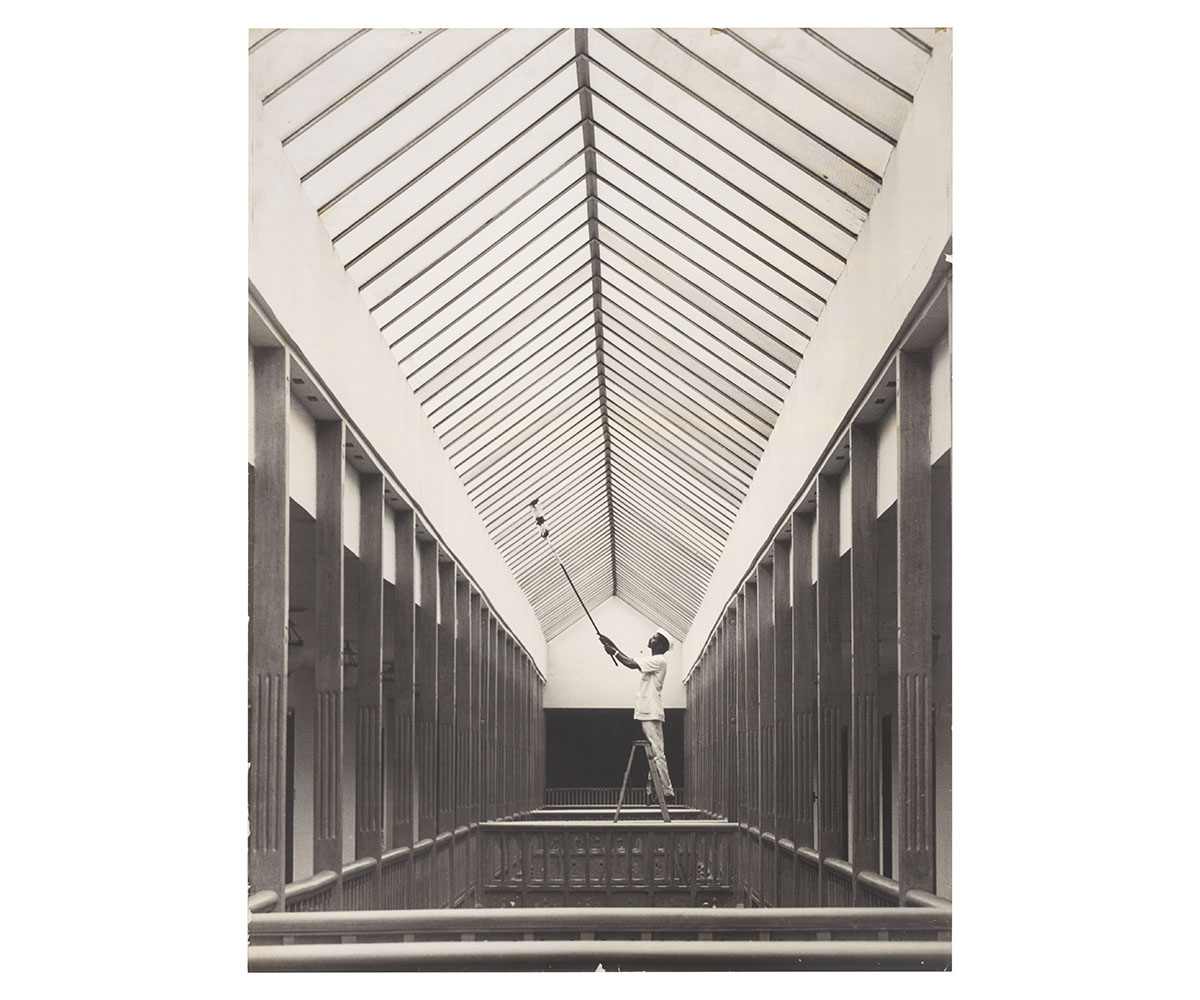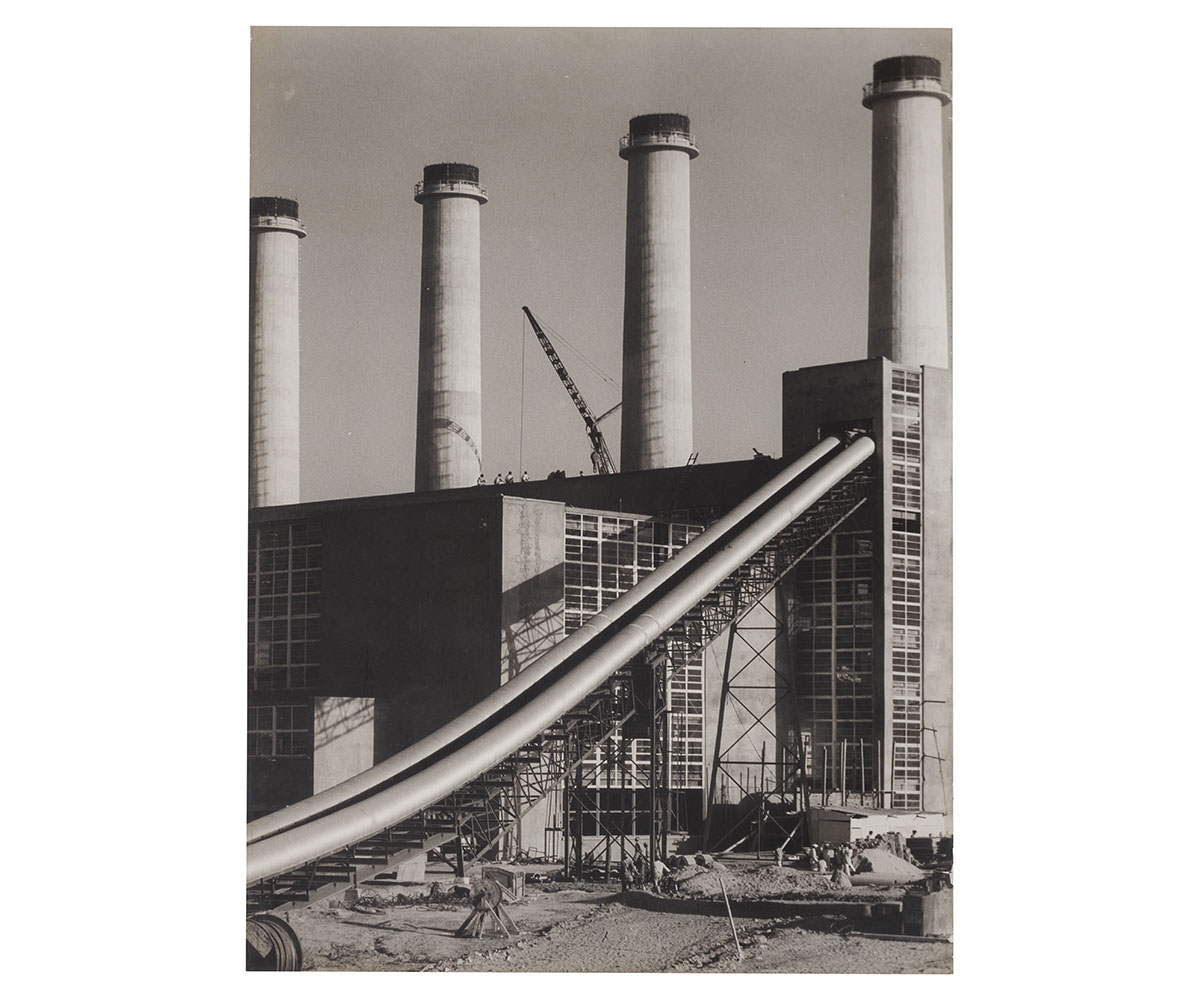An Indian photographer best known for his industrial photography, Mitter Bedi was commissioned by several public and private enterprises, and extensively photographed projects across industries such as steel, oil, mining, hospitality, sugar while also photographing for the film and fashion industry, along with advertising. His stark images in black and white record a significant period of Nehruvian India, and demonstrate an expansion of the genre of industrial photography, wherein images were not just functional and representational, but also artistic. His photographs reveal a close study and relationship between his subject and its form: whether through its shape, design, or geometry.
Bedi was born in Lahore (now, in Pakistan) in undivided India. After receiving his school education from DAV School in Lahore, he moved to Mumbai in 1940, and studied at the Vidyasagar College, Kolkata, graduating in 1943. After unsuccessful attempts at finding employment in Kolkata, he moved back to Mumbai and started working in the city’s emerging film industry. He joined the production house Filmkar as a publicity officer and later worked in motion pictures from 1947 to 1950. To supplement his income, he would cover birthday and wedding parties, and shoot celebrities and diplomats coming in at the airport. With his brother, he opened a small shop behind the Taj hotel, and began developing and selling photographs to sell to tourists.
Through a chance encounter, he received an opportunity from Standard Vacuum Oil Company, now Hindustan Petroleum, to take photographs of their company executives for their Annual Report in 1959. Through this assignment, he met his mentor, Arthur d’Arzien, who was an American photographer famed for his industrial photography Alongwith shooting for industrialists, he worked with advertising agencies who commissioned him to shoot their products. He went on to receive prestigious assignments from corporations like Air-India International, National Organic Chemical Industries Limited, Salgaonkar Mines, the Indian Tourism Development Corporation, Birla’s, Lever’s, Farex, and Kwality ice creams. He worked with the hospitality industry too, photographing Indian Hotels, ITDC, Taj Hotels, and Welcome Groups. He also shot for fashion campaigns for Digjam, for instance and the first Lakmé cosmetic campaign launched in india.




